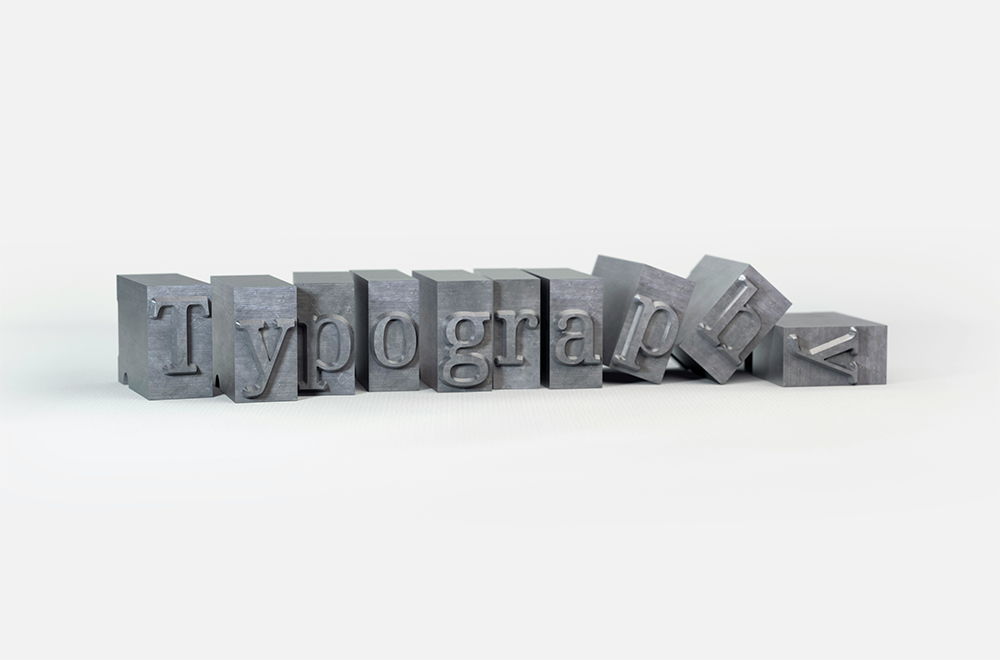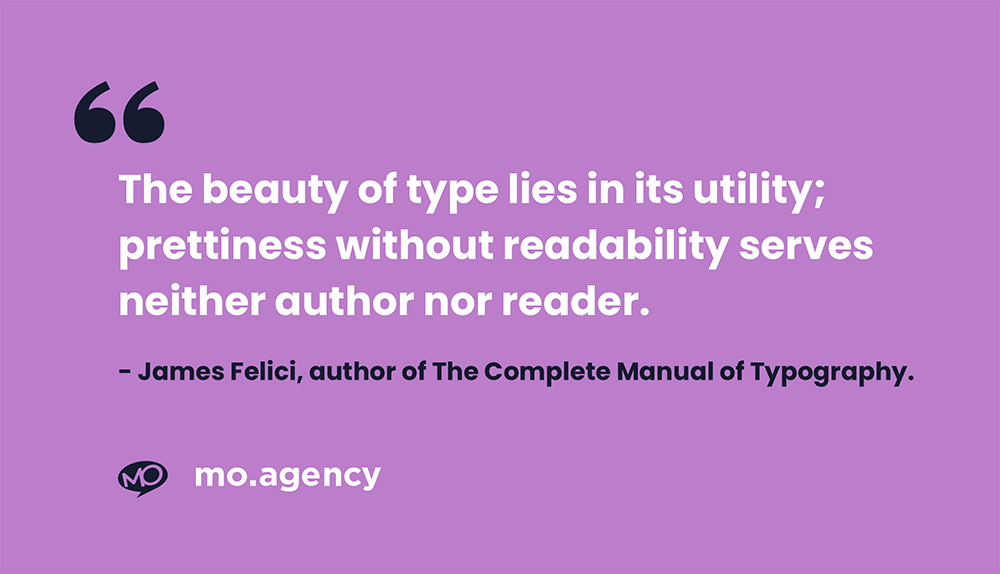Typography is often perceived as encompassing only the selection of fonts. However, in the modern digital landscape, typography is an essential component of digital branding and user experience. It transcends visual aesthetics and plays a crucial role in communicating a brand’s message and essence effectively to its target audience.
Furthermore, a well-executed typography can influence customer perceptions and decision-making, making it a powerful element in marketing and communication strategies. This article delves into the multifaceted role of typography in digital environments, emphasising its impact not just as a design element, but as a strategic tool that shapes brand identity, enhances user experience, and maintains consistency across various digital platforms.
Key Takeaways
- Typography is a key element of brand identity as different fonts embody unique characteristics and emotions that help shape brand perception.
- An effective typography enhances user experience by adapting to various devices and screen sizes to maintain legibility, and creates a visual hierarchy for better engagement and navigation.
- Maintaining typographical consistency across various channels is crucial, because an inconsistent typography can harm brand perception, whereas a unified approach strengthens brand identity and reinforces key messages.

What is typography?
Typography is the art of structuring letters to make text legible and aesthetically pleasing. Generally, this involves the selection and design of a typeface (i.e. font family), line and letter spacing, font size and weight, and layout rules.
Typography is much more than just a design element. It is a critical component of design that significantly influences how information is communicated and perceived. When utilised effectively, it becomes a multifaceted tool that shapes brand identity, impacts user experience, and ensures consistency across digital platforms.
The following breakdown explores how typography plays an important role within these 3 key areas of the digital branding environment.
1. Brand Identity
Typography is a core component of a brand’s visual identity, serving as an expression of a brand’s personality and values. Each font has its own character, associations, and emotional impact. For example, a Serif font is associated with tradition and reliability, whereas a Sans-serif font will project modern and contemporary characteristics.
The consistent implementation of a specific set of fonts, and how they work together (called a font lockup), helps to build brand recognition. Typographical consistency across a brand’s digital ecosystem (e.g. website, social media, presentations, digital marketing campaigns, sales collateral, etc.), ensures that its target audience associate this specific typographical style with the brand.
The brand’s typography, therefore, works in conjunction with the logo and brand colours to effectively communicate the brand’s identity. Ultimately, by ensuring brand consistency across all digital touchpoints, a unique and distinctive typography will play an important role in differentiating a brand from its competitors.
2. User Experience
The complexity and fluidity of digital media demand a more dynamic, adaptable, and user-centric approach to typography compared to traditional print media.
Nowadays, a brand’s typography needs to be able to adapt to different devices, screen sizes, and channels (websites, social media, online advertisements, video, etc.), whilst ensuring a positive user experience and maintaining brand consistency.
It’s therefore important when developing a brand’s typography that the following factors are considered:
Legibility
In digital media where users often look at backlit screens for long periods, clear and legible typography is crucial for preventing eye strain and fatigue. Good typography ensures that text is easy to read and enables users to quickly and comfortably absorb the information.
Sans-serif fonts are a popular choice for digital text, because it is generally easier to read and their ability to scale effectively to different screen sizes ensures that they will maintain their legibility even when it is reduced to a small size.
Thus, when developing a brand’s typography there needs to be a fine balance between establishing the brand’s unique identity and utilising web-friendly fonts that will ensure effective communication.

User Engagement
User engagement in typography is about creating a visual and experiential connection with the target audience. Aesthetically, typography can grab a user’s attention and create a positive first impression. Furthermore, well-designed typography creates an information hierarchy that guides the user to the most important information, navigation paths and call to actions.
This guidance enhances the user experience by making the journey through the brand’s digital media (e.g. websites, apps, or social media collateral) more intuitive and satisfying. Ultimately, when users can process information quickly and comfortably, they are more likely to engage with the content for a longer period of time.
Accessibility
Accessibility considerations in typography are crucial, because it ensures that the fonts implemented by the brand are comprehensible to as wide an audience as possible, including people with disabilities. This is not only an ethical consideration, but also a legal requirement by the Web Content Accessibility Guidelines (WCAG), which requires all digital content to be accessible.
Accessibility in typography is characterised by clear fonts, sufficient line and letter spacing, high contrast between the text and its background, responsiveness to different screen sizes, and compatibility with assistive technologies such as screen readers. Ensuring typographical accessibility not only benefits the users, but also positively impacts brand perception, and increases the brand’s appeal to a wider audience.
3. Consistency
As the digital landscape is constantly evolving, it has become increasingly difficult for brands to ensure the consistent application of their typography. Simply having a unique typography that typifies your brand is not sufficient anymore. The chances are good that the typography will be applied inconsistently by different stakeholders on different channels.
The impact of inconsistent typography across different brand touchpoints will make the brand appear disorganised and unprofessional. A brand’s corporate identity or guidelines therefore need to be developed with its digital ecosystem in mind to ensure the consistent application of the typography across various channels.
Consistency can be ensured by establishing clear rules for primary and secondary fonts, headings, subheadings, body text, and any special stylings for call to actions or any text that needs to be highlighted. Font usage should be standardised across all digital media and brand guidelines should clearly indicate where and how differentiation should be implemented.
If typographical consistency is applied it will contribute to an integrated brand identity across all touchpoints, which will strengthen brand recognition and recall, improve the user experience, and effectively communicate the brand’s key messages.
Final Thought
Typography in digital branding is not merely about aesthetic appeal, but rather an important tool that influences how a brand is perceived and experienced. By carefully considering the impact of typography on brand identity, user experience, and maintaining consistency across digital platforms, it becomes an asset in a brand’s digital arsenal.
Ultimately, implementing a strategically crafted typography can enhance a brand’s ability to connect with audiences, convey their messages effectively, and stand out in a crowded digital landscape.





